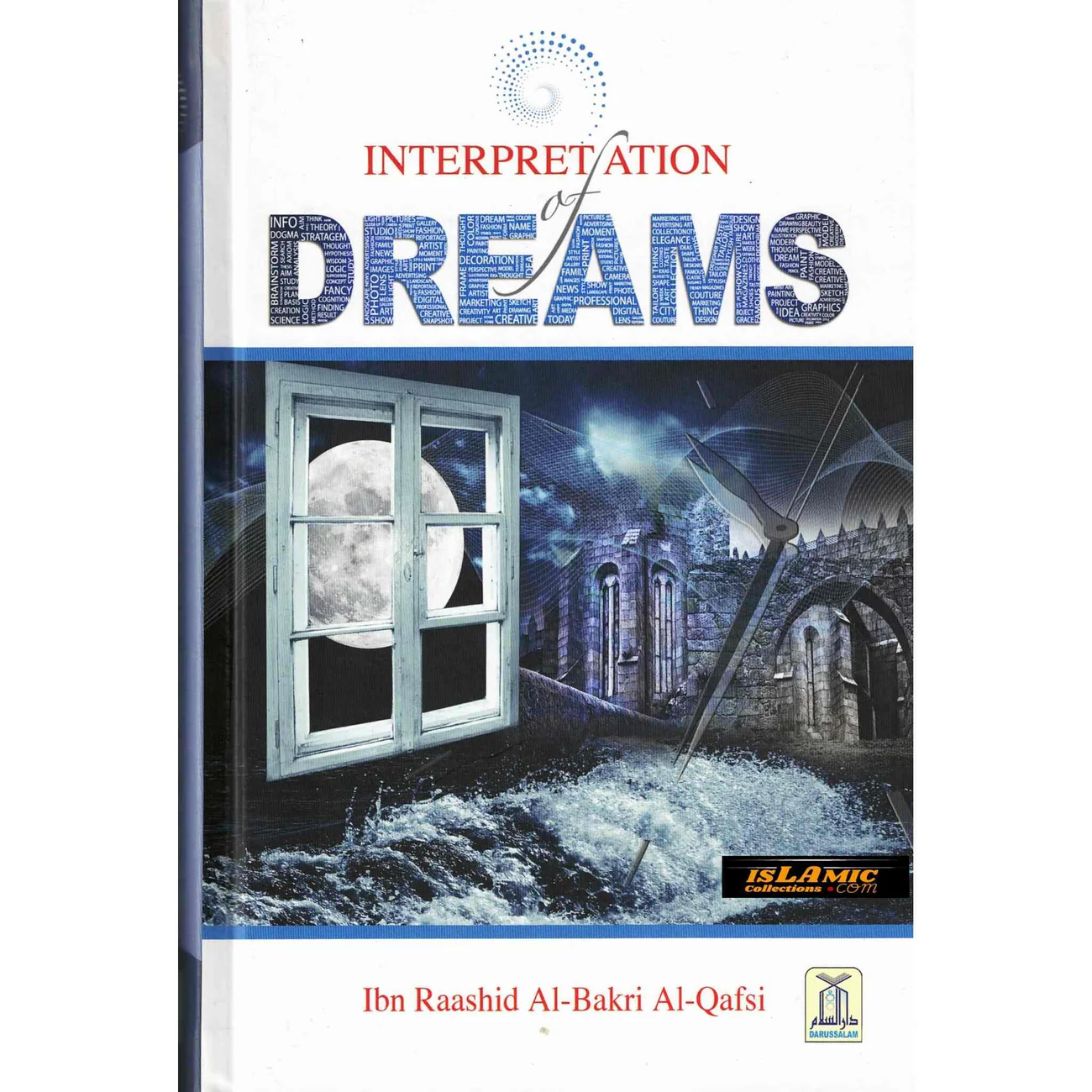” Interpretation Of Dreams ” Dreams have intrigued humanity forever. They whisper secrets, reveal concealed terrors, and at times, impart glad tidings or heavenly guidance. In Islam, dreams are not illusions—they can be full of meaning, warning, or even inspiration.
In Interpretation of Dreams by Ibn Raashid Al-Bakri Al-Qafsi, readers are introduced to a classical and deeply rooted Islamic perspective on dream analysis. This work preserves centuries of Islamic scholarship and presents it in a way that remains relevant today.
A Scholarly Exploration of Dream Meanings
Ibn Raashid Al-Qafsi, one of the scholars of his era, authored this book with sincere devotion to Qur’anic teachings and prophetic sayings. He aimed to explain how Muslims can interpret and comprehend dreams within the limits of Islamic teachings.
The book explores the origins of dreams, their types, and how one can distinguish between true dreams (ru’ya), satanic dreams, and muddled thoughts. It offers a credible guide for readers who look for meaning behind the visions they see when asleep.
Based on Qur’an and Sunnah
Dream interpretation in Islam is not guesswork or superstition. It is a science that relies on the Qur’an, the life of Prophet Muhammad ﷺ, and the statements of the early scholars. Ibn Raashid Al-Qafsi carefully quotes from authentic sources in order to provide a basis for proper dream interpretation.
The Qur’an includes the legendary tale of Prophet Yusuf عليه السلام, whose life was defined by dreams. The Prophet ﷺ himself used to interpret dreams for his companions. This book takes the same great direction, equating dream interpretation with the light of revelation.
The Role of the Dream Interpreter
Not all can interpret dreams. It is a task that needs knowledge, wisdom, and spiritual understanding. The book describes the attribute needed in a dream interpreter. Arrogance, personal prejudice, or absence of religious foundation may cause improper interpretation and injury.
Ibn Raashid reiterates that the interpreter of dreams must have in-depth knowledge in Islamic and act with care and humility. In actual examples, he illustrates how mistakes in interpretation can impact lives and how truth can heal or guide when presented in the right manner.
Categories and Types of Dreams
The book explains the three types of dreams the Prophet ﷺ spoke of: true dreams from Allah, vexing dreams from Shaytan, and jumbled dreams from the mind. It’s essential to understand these differences before even trying to interpret anything.
For example, a peaceful dream that is compliant with Islamic values can be from Allah. A fearful or confusing dream is perhaps from Shaytan. A dream that indicates worries or emotional tension of the day can just reflect what is in our mind.
Common Symbols in Islamic Dream Interpretation
Throughout the book, Ibn Raashid talks about often-used symbols in dreams, for instance, water, animals, colors, or activities like flying or falling. All of them have possible meanings that depend on the context and the state of the dreamer.
He establishes that symbols by themselves cannot be interpreted. A lion for one individual may signify strength, but to another, it can represent tyranny or fear. Interpretation is subjective to the dreamer’s personality, way of life, and current circumstances.
Practical Guidance for Dreamers
The author also provides practical tips on how to deal with dreams. For instance, when to share them with whom and how to respond to such distressing visions. Dreams should only guide decisions if accompanied by clarity and divine signs.
The Prophet ﷺ cautioned believers to conceal good dreams and seek the protection of Allah from bad ones. This book supports that wisdom and invites readers to cultivate spiritual sensitivity and faith in Allah’s design instead of fixating on every dream.
A Rich Legacy of Classical Thought
What distinguishes this book is its classical basis. Ibn Raashid not only relies on the traditions of the Prophet but also upon early scholars such as Ibn Sirin and other titans of Islamic history. This renders the book a bridge between the early generations and contemporary readers. His writing is careful, prudent, and respectful of the holy trust inherent in dream interpretation. He eschews hyperbole and always holds the Qur’an and true Hadith paramount in his quest for meaning.
Relevance for Today’s Muslims
Although written centuries ago, the insights in Interpretation of Dreams are incredibly relevant today. Many Muslims still seek answers to their dreams, often turning to unreliable sources online or culturally biased traditions. This book offers a safe, scholarly path. It offers balance and clarity in an era of disinformation. It reminds Muslims that dreams can be of worth but should be interpreted with knowledge and not replaced by prayer, reason, or revelation.
An Educational and Spiritual Journey
This book is more than a guide to dream interpretation it is a lesson in spiritual maturity. It is a lesson in patience, humility, and trust in Allah. It challenges believers to learn from reliable sources and to approach the unknown with respect and responsibility. Ibn Raashid’s soothing, academic tone creates a sense of pulling the reader into a greater awareness of the dream world. Instead of offering immediate answers, he sets the reader on a path of reflection, discovery, and progress.
A Must-Have for Every Islamic Library
Interpretation of Dreams by Ibn Raashid Al-Qafsi is in the hands of earnest seekers of knowledge, inquisitive readers, and anyone who esteems the intellectual and spiritual riches of Islam. It is one that is to be revisited again and again. Used for individual learning or scholarly study, it provides ageless advice and wisdom. Each page is a reminder that dreams are not spells—but messages that have to be handled with respect and sense.
Read more: My first quran with pictures part 2



